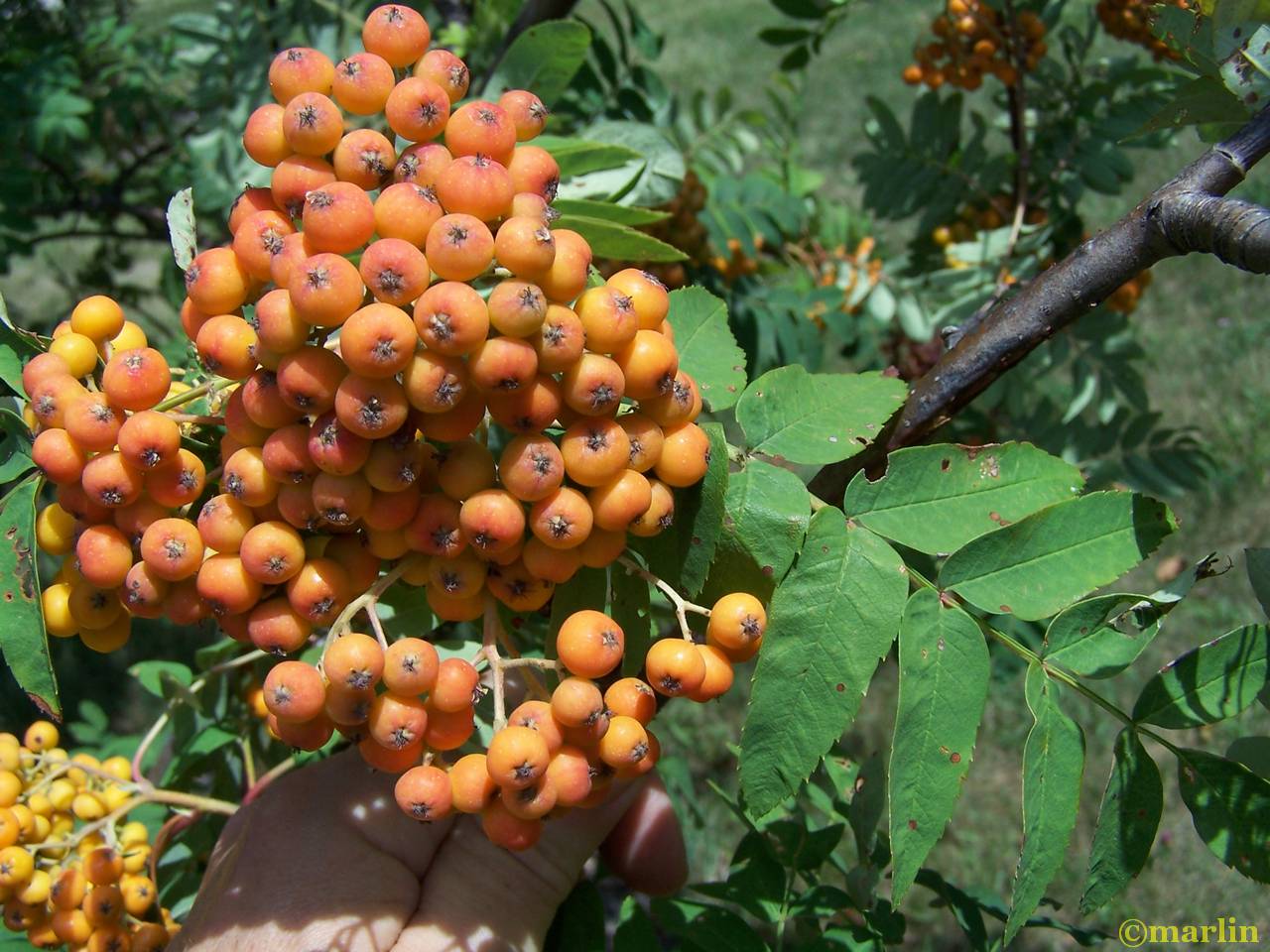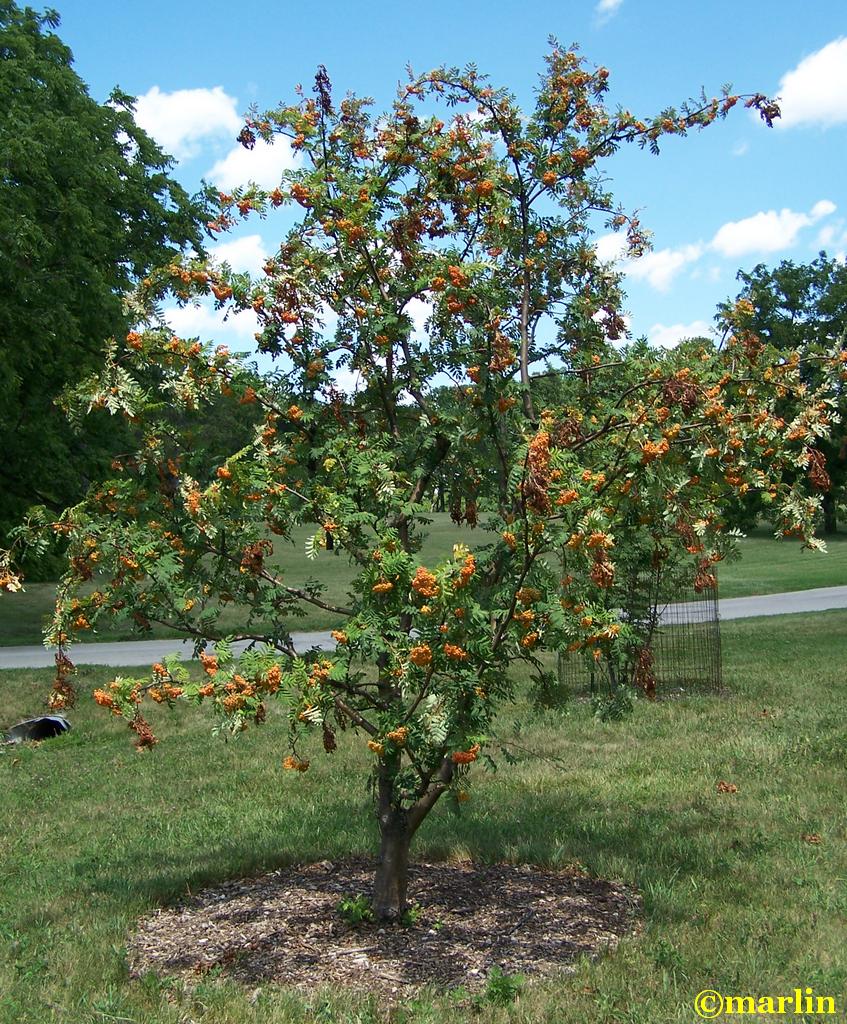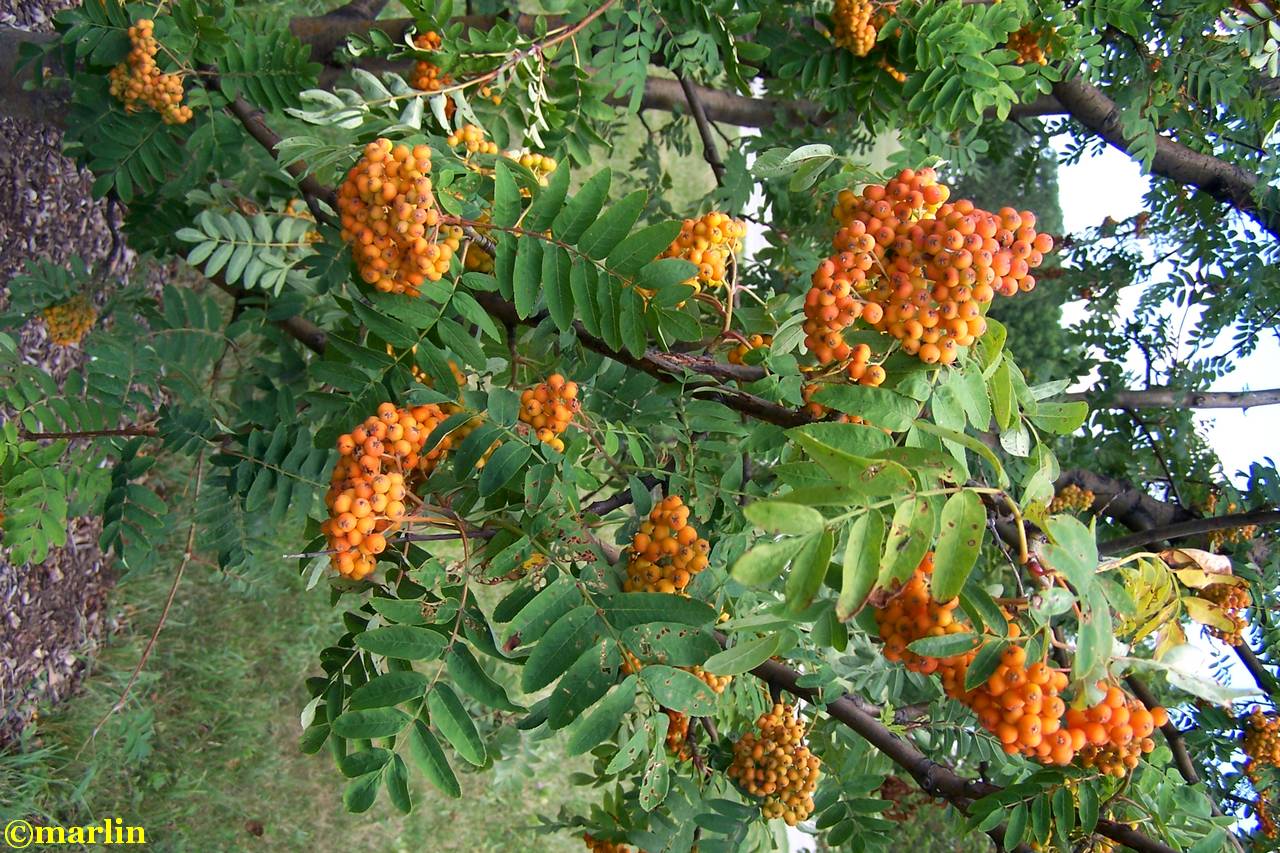American Mountain-Ash – Sorbus americana
Family Rosaceae – Rose Family; Fruit Trees
The American Mountain ash was used by Native Americans for medicinal purposes.

The bright orange berries persist through winter, making this tree and outstanding ornamental for specimen plantings. Native populations are listed as endangered by the State of Illinois.

The mountain ash and related species (most often the European Mountain ash, Sorbus aucuparia) are sometimes referred to in folklore as “Rowan” trees, but this use has almost disappeared from the modern lexicon. The rowans were thought by the Celts and other primitive peoples of The British Isles to have magical properties
“Mountain ash, 1804, from rowan-tree, rountree (1548), northern English and Scottish, from a Scandinavian source (cf. O.N. reynir, Swed. Ronn “the rowan”), ultimately from the root of red, in reference to the berries. The rowan “was the tree most often credited with protective magical powers against all effects of witchcraft, not merely in Celtic areas but throughout Britain.” — Oxford Dictionary of English Folklore

American Mountain-ash is relatively small (maximum height 40 feet) deciduous perennial tree, native to northern North America. Its conspicuous white spring flowers and outstanding, persistent orange fruit make it one of our most recognizable trees. It is well adapted to both coarse and fine soil textures, but has a low tolerance for drought or fire, and virtually no tolerance for salt aerosols. It grows best in full sun but can tolerate some shade.
The showy white flowers appear in early summer, and the abundant orange fruit appear in summer, persisting through winter. Fruit provides palatable browse for many animals and birds, but is not suitable for human consumption, except for various folk remedies; the plant is not toxic.
American Mountain-ash was used extensively by Native Americans for various purposes (5):
- Algonquin, Quebec, Drug (Cold Remedy); Infusion of inner bark taken for colds.
- Algonquin, Tete-de-Boule Drug (Psychological Aid); Buds and inner bark fibers boiled and used for depression.
- Iroquois Drug (Gastrointestinal Aid); Fruit used to facilitate digestion.
- Malecite Drug (Analgesic); Infusion of bark used for pain after childbirth.
- Micmac Drug (Gastrointestinal Aid); Infusion of root taken for colic.
- Ojibwa Drug (Venereal Aid); Infusion of root bark taken for gonorrhea.
- Penobscot Drug (Emetic); Plant used as an emetic.
- Algonquin, Quebec Food (Fruit); Fruit used for food.
- Ojibwa Fiber (Canoe Material); Wood used to make ribs for canoes, snowshoe frames.
Family Rosaceae – Rose Family; Fruit Trees
Containing hawthorn, apple, pear, cherry, plum, peach, almond, mountain-ash and whitebeam. Many of these plants are of vital economic importance, the fruit of which contain vitamins, acids, and sugars and can be used both raw and for making preserves, jam, jelly, candy, wine, brandy, cider and other beverages. Tree Encyclopedia | Tree Index
